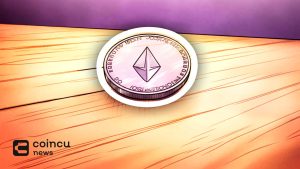Ethereum Fees at the lowest price ever with 50 cents.
Even high-priority transactions now require only 10 gwei per gas unit, with one gwei equaling a billionth of an ETH, equating to around 50 cents in total. However, network demand remains high, with over one million transactions each day paying only 50 cents in-network costs.
When’s the lowest since July 2020, and it’s the first time in nearly two years that utilizing the Ethereum network costs almost nothing, as opposed to last May, when fees topped $70 per transaction, as shown below.

One reason for this decline in costs to practical levels could be the growth of second layers (L2). They’re gaining traction, with 2.23 million ETH worth $6 billion presently transacting on Arbitrum and other L2s. Since last August, the gas limit has been increased from 15 million to 30 million per block, enhancing network capacity while decreasing prices.
However, the main reason is that there aren’t as many farming airdrops or NFT mintings cluttering up the network. It is also possible that the fee-burning method minimizes network spam, particularly from miners, but also from other users, because all fees no longer go to miners because the majority is now removed from circulation.

Even with the reinstatement of fees to normal levels, 2,500 ETH has been burned in the last 24 hours. If ETH was fully Proof of Stake, 1,000 ETH would be taken out of the supply every day, as the daily staking incentive is around 1,400 eth.
With these fee levels, approximately 100,000 ETH would be deducted from the overall supply each quarter, that’s approximately $250 million, or about $1 billion per year, taken out of supply and so essentially amounting to new demand.
At higher base charge levels, either because of wider use of L2s or because stakeholder capacity is increased further, that can easily exceed one million ETH, or around 1% of total supply, being pulled out of circulation every 3 months. At current levels, Ethereum’s annual inflation rate will be around -0.5% beginning this summer.
What do you think about this? Let us know by commenting below!
DISCLAIMER: The Information on this website is provided as general market commentary and does not constitute investment advice. We encourage you to do your own research before investing.
Join CoinCu Telegram to keep track of news: https://t.me/coincunews
Follow CoinCu Youtube Channel | Follow CoinCu Facebook page
KAZ
CoinCu News



















